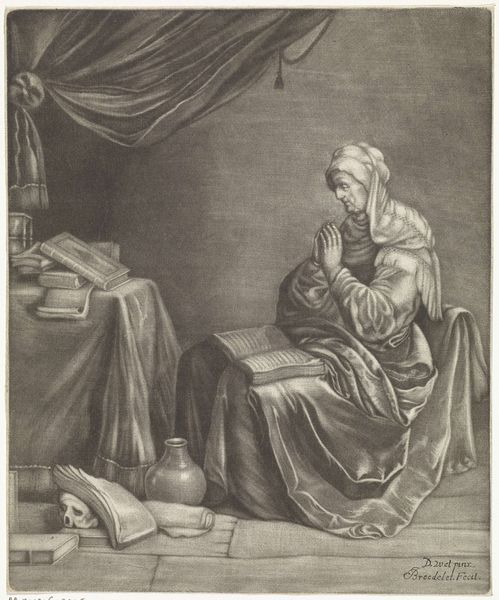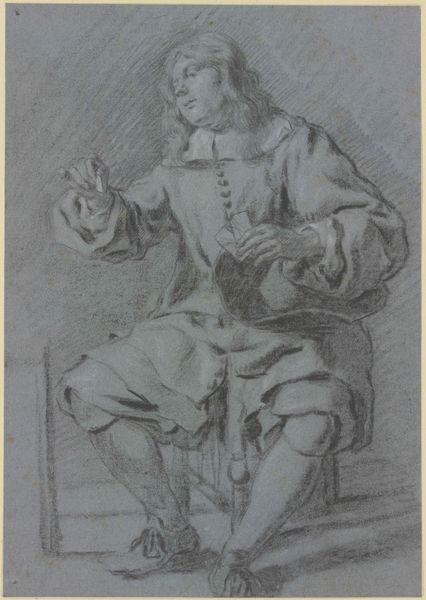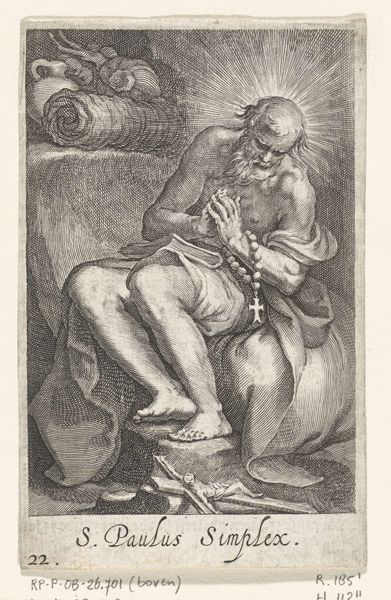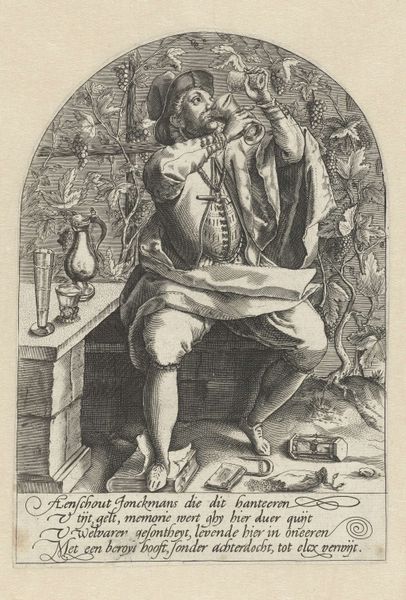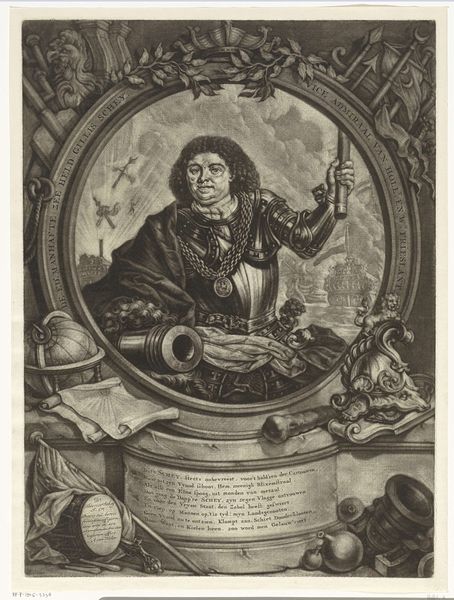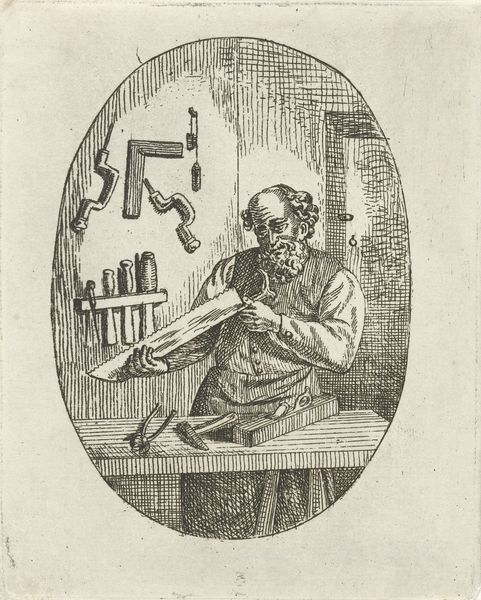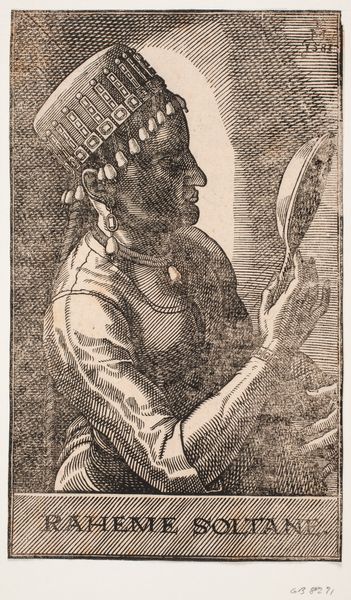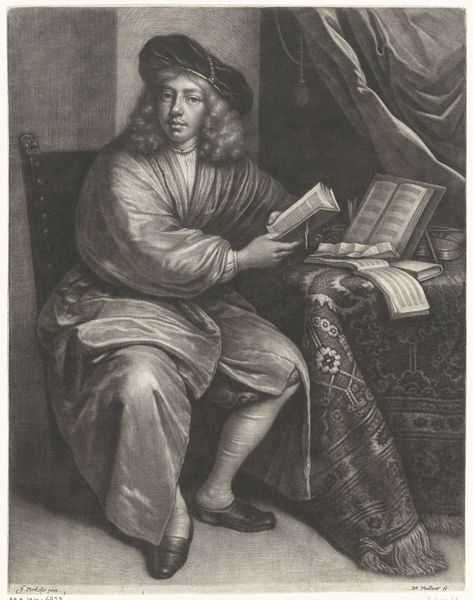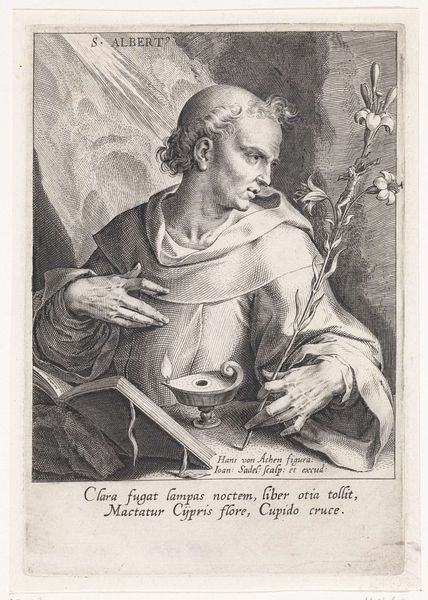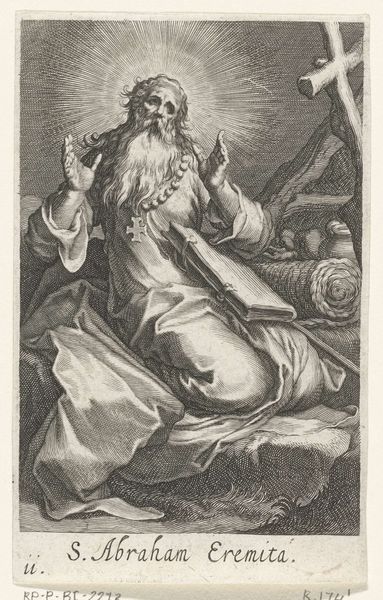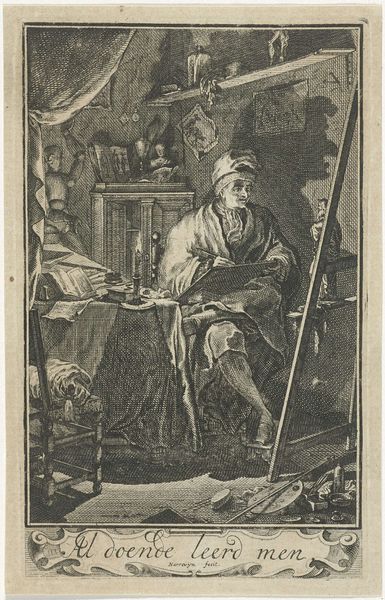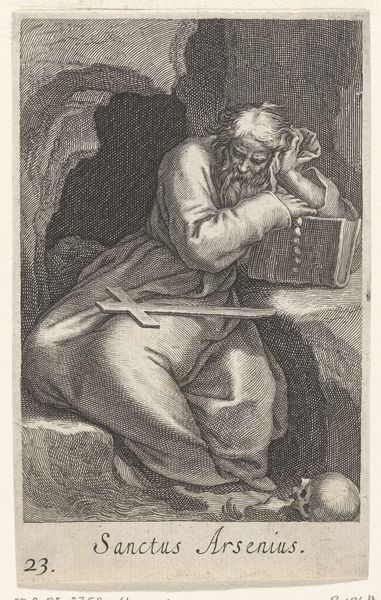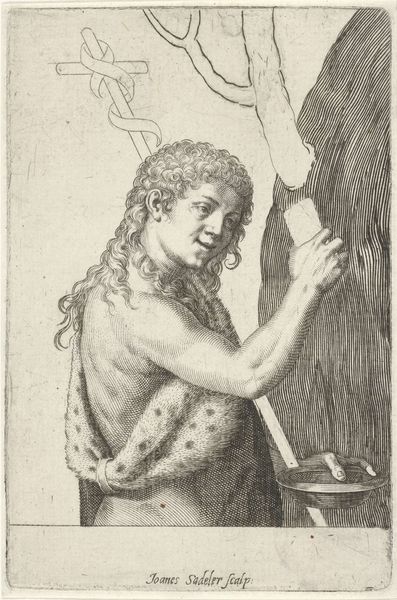
print, engraving
#
portrait
#
baroque
# print
#
portrait reference
#
genre-painting
#
history-painting
#
engraving
Dimensions: height 260 mm, width 193 mm
Copyright: Rijks Museum: Open Domain
Curator: Looking at this engraving titled “Het Gehoor,” or "The Hearing," crafted sometime between 1673 and 1694, I am struck by the performative nature of how sensory experience was captured. Editor: Immediately, I notice how cluttered the composition is; it feels busy for a single figure. The feather headdress practically screams opulence. What do you make of the way that musical notation is handled? Curator: It’s indicative of the baroque era’s penchant for elaborate allegory, in this case personifying hearing. The presence of musical instruments alongside the musical notation on the desk certainly points us towards sound, as do the cherubs nestled below. It creates a narrative beyond just the individual portrayed. The individual, perhaps an aristocrat based on clothing conventions of the era? Editor: Exactly. See the way the individual is framed against the heavy drape behind? Even the jug on the desk participates, reflecting light in a way that centers them as part of the aristocratic class. Notice, also, the bow connecting a small sculptured man on the desk. The visual echoes between the primary male figure and this miniature statue beg a series of questions. Does that bow connect them? Does it bind the individual to musical hearing itself, almost creating an altar-like offering? Curator: That interplay reveals the fascinating societal dynamic present in Dutch Golden Age portraiture, a kind of constructed image tailored for a specific audience and to reinforce social standing. One must remember, that portraiture, during the 17th century, served many societal functions, marking occasions or as visual cues as indicators of political and cultural power. Here in the Rijksmuseum, we have endless examples of this. Editor: You're right, it goes far beyond mere aesthetics. When we start unpacking all the levels of symbolism, and you look beyond the initial image of a person making music, we find complex social meanings regarding sensory awareness and performative identity in 17th-century Dutch society. Curator: Precisely. This particular engraving speaks volumes not just about auditory perception, but about the visual representation of social structures and cultural values within a very specific historical moment. Editor: Yes, this baroque personification makes one think about not just sensory information, but social memory. I now look forward to reflecting more deeply on the piece's resonance with period ideas around individual identity and place within 17th-century Dutch culture.
Comments
No comments
Be the first to comment and join the conversation on the ultimate creative platform.
